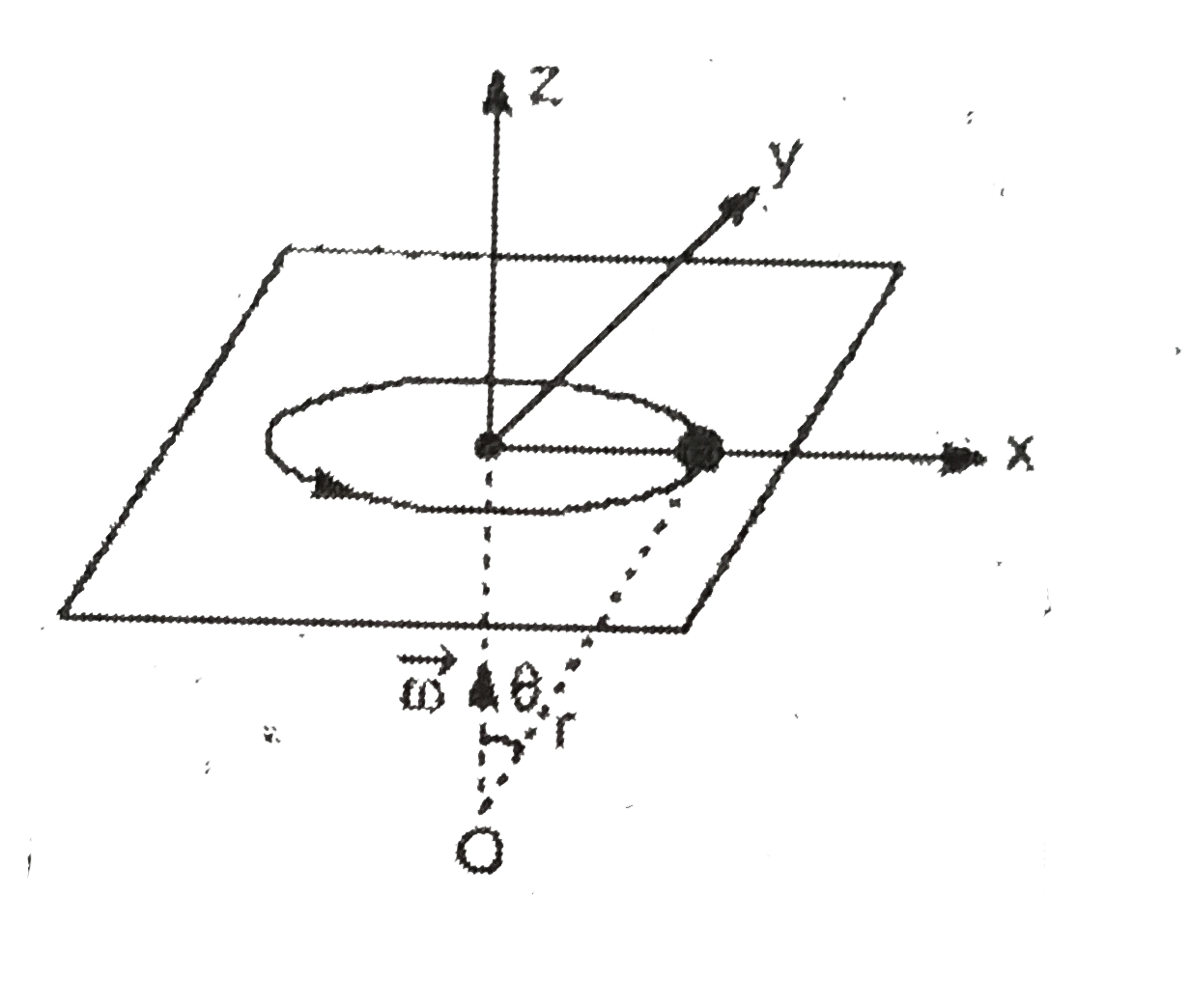A metal coin of mass 5 g and radius 1 cm is fixed to a thin stick AB of negligible massas shown in the figure. The system in initially at rest. The constant torque (in Nm) that will make the system rotate about AB at 25 rotations per second in 5s, is close to:

Angular acceleration
Topper's Solved these Questions
- CHAPTERWISE NUMERIC /INTEGER ANSWER QUESTIONSBOOK - DISHA PUBLICATIONCHAPTER - CHAPTERWISE NUMERIC /INTEGER ANSWER QUESTIONSEXERCISE - CHAPTER -7 (GRAVITATION)
15 Videos
- CHAPTERWISE NUMERIC /INTEGER ANSWER QUESTIONSBOOK - DISHA PUBLICATIONCHAPTER - CHAPTERWISE NUMERIC /INTEGER ANSWER QUESTIONSEXERCISE - CHAPTER -7 (MECHANICAL PROPERTIES OF SOLIDS)
15 Videos
- CHAPTERWISE NUMERIC /INTEGER ANSWER QUESTIONSBOOK - DISHA PUBLICATIONCHAPTER - CHAPTERWISE NUMERIC /INTEGER ANSWER QUESTIONSEXERCISE - CHAPTER -5 (WORK, ENERGY AND POWER)
15 Videos
- ATOMSBOOK - DISHA PUBLICATIONCHAPTER - ATOMSEXERCISE - EXERCISE-2: CONCEPT APPLICATOR
30 Videos
- COMMUNICATION SYSTEM BOOK - DISHA PUBLICATIONCHAPTER - COMMUNICATION SYSTEM EXERCISE - EXERCISE-2 : Concept Applicator
30 Videos
Similar Questions
A metal coin of mass 5 g and radius 1 cm is fixed to a think stick AB of negligible mass as shown in the figure. The system is initially at rest. The constant torque, that will make the system rotate about AB at 25 rotations per second in 5 s, is close to:

View SolutionA metal coinn of mass 5 g and radius 1 cm is fixed to a thin stick AB of negligible mass as shown in the figure. The system is initially at rest. The constant torque, hat will make the system rotate about AB at 25 rotations per second in 5s. Is close to

View Solution
Knowledge Check
A vertical disc of mass 5kg and radius 50cm rests against a steo of height 25cm as shown in figure. What minimum horizontal force applied perpendicular to the axle will make the disc to climb the step ? Take g=10m/s2.
 .A50 NB50√3NC25NDnone of these
.A50 NB50√3NC25NDnone of theseA mass m is attached to a rigid rod of negligible mass as shown in figure. The system is pivoted at point O and rotates about the indicated z-axis with angular velocity →ω, maintaining a fixed angle θ with the axis.
 AAngular momentum →L of mass m about pivot is parallel to vector →ωBAngular momentum →L of mass m about pivot is never parallel to →ωC→L0=−mr2ωsinθcosθˆi+mr2ωsin2θˆkDAngular momentum of particle about P is parallel
AAngular momentum →L of mass m about pivot is parallel to vector →ωBAngular momentum →L of mass m about pivot is never parallel to →ωC→L0=−mr2ωsinθcosθˆi+mr2ωsin2θˆkDAngular momentum of particle about P is parallelTwo discs A and B each of mass 2kg and radius 0.5m are rigidly fixed to the end of a thin shaft S, which is supported in horizontal position with the help of two smooth bearings at points P1 and P2. Two blocks of masses 2kg and 1kg are connected to the light cords wrapped around the discs as shown in the figure. There is no slipping between the cord and the discs. If the system is released from rest from the position shown, the mark released from rest from the position shown,
 APower developed by tension in cord connected to 2 kg block is negativeBAcceleration of each block is 2m/s2.CTotal work done by tension on discs is zero during the motion.DAcceleration of each block is 1m/s
APower developed by tension in cord connected to 2 kg block is negativeBAcceleration of each block is 2m/s2.CTotal work done by tension on discs is zero during the motion.DAcceleration of each block is 1m/s
A disc of mass m and radius r is free to rotate about its centre as shown in the figure. A string is wrapped over its rim and a block of mass m is attached to the free end of the string. The system is released from rest. The speed of the block as it descends through a height h, is :-

View SolutionA disc of mass m and radius r is free to rotate about its centre as shown in the figure. A string is wrapped over its rim and a block of mass m is attached to the free end of the string. The system is released from rest. The speed of the block as it descends through a height h, is :-

View SolutionTwo discs A and B each of mass 2kg and radius 0.5m are rigidly fixed to the end of a thin shaft S, which is supported in horizontal position with the help of two smooth bearings at points P1 and P2. Two blocks of masses 2kg and 1kg are connected to the light cords wrapped around the discs as shown in the figure. There is no slipping between the cord and the discs. If the system is released from rest from the position shown, the mark released from rest from the position shown,

View SolutionFind torque required so that a coin of mass 1kg rotates 25 revolution in 5 sec starting from rest.
_2019_CBT6_E01_033_Q01.png)
View SolutionFind torque required so that a coin of mass 1kg rotates 25 revolution in 5 sec starting from rest.
_2019_CBT6_E01_033_Q01.png)
View Solution
